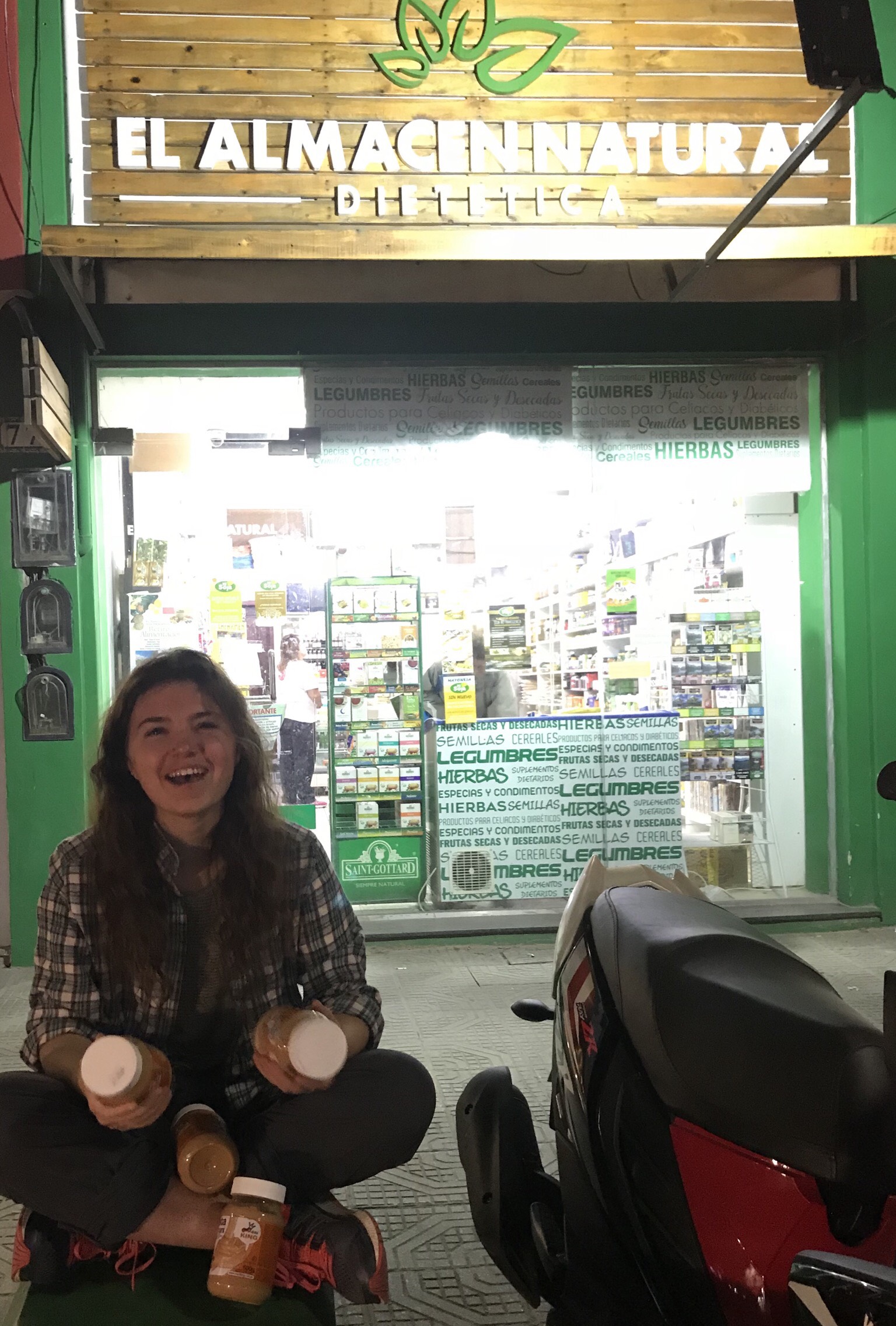Unique Foods in Argentina
By: Jane Bozsik, CAS ’19

Owl Monkey Project – Formosa Province, Argentina
My time abroad has been more unusual than most. Most of the week we spend camping in the Gran Chaco, crafting our own meals over a stovetop rather than eating out. Our camp diet is composed of whatever is offered at local grocery stores. As a result, some new flavors have been incorporated into my daily diet (e.g. polenta) while some old ones have been swapped out (i.e., peanut butter is extremely hard to find, except in a few natural food stores). Because of the simplicity of the camp diet, we are constantly looking to spice things up; for instance, one of the grad students implemented a weekly cooking competition. Each of us is paired with another person and teams of two prepare a meal–with the stipulation that one specified “secret ingredient” is used–with as much creativity as we can muster, while using the camp staples (rice, beans, polenta, pasta, etc.). So far this has lead to unique and interesting dishes. Last week, the suggested “secret ingredient” was mango fruit drink mix. One team prepared an ethnic Israeli dish, shakshuka, with a mango twang, for lunch. The other team diluted the mix in a large pot of delicious-and-pleasantly-fruity soup. Altogether, food has been a mix of simple, filling, veggie-based meals during the week.
On the other hand, we use weekends as a chance to enjoy local flavors. A lot of the Argentinian diet hinges on bread and meat; empanadas are a classic example. Dulce de leche is another staple in the city of Formosa, found in everything from a dip for crackers, to a refreshing ice cream flavor. I’ve found it oozing out of a breakfast pastry and hidden in the center of a churro. The most unique food that I’ve tasted in Formosa, I encountered last weekend at a food and music festival (Formosa Da Gusto) where vendors had set up small stalls selling meats, sweets, and drinks (mate is a must). The most striking oddity I encountered was an empanada de yacare, or caiman. I was too curious to pass it up, although I was unsure what to expect. I was, however, pleasantly surprised by the first mouthful, biting into what tasted like a warm, gooey chicken empanada. After, my friend and I washed it down with a sweet dulce de leche tart.
The Global Research and Internship Program (GRIP) provides outstanding undergraduate and graduate students the opportunity to intern or conduct research abroad for 8 to 12 weeks over the summer. Participants gain career-enhancing experience and global exposure that is essential in a global workforce. Placements and funding awards are available.